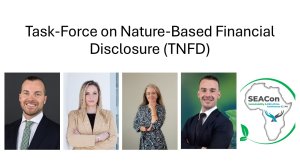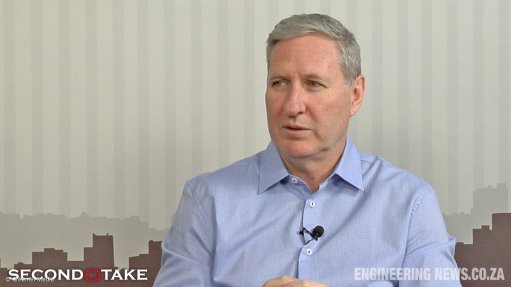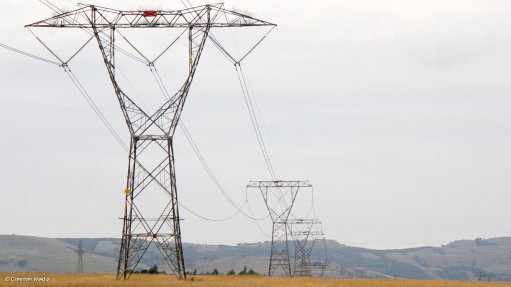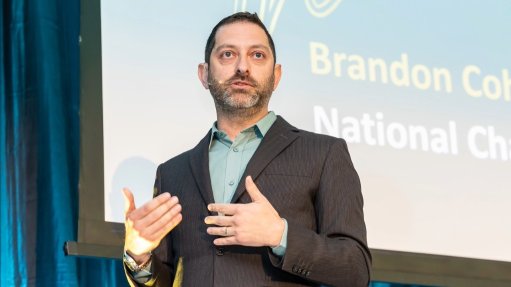Nature takes centre stage: TNFD framework emerges as strategic risk tool for business, finance

The webinar provides an overview of what TNFD covers as well as some real life experiences of implementing this new guideline.
In a webinar rich with insight and urgency, Taskforce on Nature-related Financial Disclosure (TNFD) director of market engagement Candice Dott and a panel of experts laid bare the growing imperative for companies and financial institutions to place nature at the heart of strategic risk management and decision-making.
Opening the session, Dott described the TNFD as a voluntary, market-led initiative that equips organisations with a structured approach to identifying, assessing and disclosing nature-related dependencies, impacts, risks and opportunities. She highlighted the need to move beyond viewing nature as a corporate social responsibility issue and instead to see it as a material risk factor, with deep financial consequences.
“At the core of the TNFD framework is the LEAP approach, which stands for locating the interface with nature, evaluating dependencies and impacts, assessing risks and opportunities, as well as preparing to respond and report,” Dott explained.
This is a process that helps businesses pinpoint their interface with nature, assess how their operations and value chains both depend on and impact natural systems, and plan responses aligned with emerging global standards.
Integrating Nature and Climate Risk
Dott elaborated on how the TNFD complements and extends the widely adopted Task Force on Climate-related Financial Disclosures (TCFD). While TCFD focuses on climate risks, TNFD widens the lens to include land, freshwater and ocean systems.
“We have carried all 11 recommended disclosures from TCFD and integrated those into the TNFD recommendations, plus we have added three additional recommended disclosures,” she pointed out.
Crucially, she noted that the TNFD framework also prioritises engagement with indigenous peoples and local communities, the groups often most affected by environmental degradation.
“The framework is rapidly gaining traction, with over 526 global companies and $17.7-trillion in assets under management already committed to TNFD-aligned reporting. This shift signals a growing recognition of the economic materiality of nature loss,” she stated.
Challenges and Opportunities
Conference organiser Sustainability and ESG Africa Conference co-founder Wendy Poulton, who moderated the session, steered the conversation towards implementation, with sustainability products supplier S&P Global Sustainable1 head of ESG client engagement for EMEA Dr Kieran Dobson, who represents the financial sector, stressing that understanding and valuing ecosystem services is essential. “Tools such as Encore are helping institutions visualise how their portfolios intersect with nature,” he said.
Encore – which stands for Exploring Natural Capital Opportunities, Risks and Exposure – is an online tool that helps organisations, particularly financial institutions, understand their dependencies and impacts on nature. It facilitates the identification of nature-related risks and opportunities, which is crucial for understanding materiality and making informed decisions.
African-led financial knowledge hub Sustainable Finance Coalition founder and CEO Candice Stevens, who brought an economic development lens to the discussion, spotlighted nature markets as a transformative opportunity for Africa. “Nature is not just a risk—it's an untapped economic frontier,” she said, citing the potential for biodiversity credits and job creation in conservation-linked sectors.
Meanwhile, S&P Global Sustinable1 senior client engagement specialist Dr Warrick Fuchsloch, who represented the industrial sector, called for stronger collaboration between technical teams and compliance departments, arguing that silos hamper effective integration of nature risk into core business strategies.
“I think that's important, building that inter-business relationship to be able to deliver the technical aspects of what the TNFD requires,” he noted.
Supply Chains in the Spotlight
When it comes to supply chain and value chain risks, the panellists were unanimous: visibility is key. Fuchsloch advocated for early engagement with material suppliers, noting that many risks lie deep in the supply chain. Dobson recommended starting with the most material supply nodes and using digital tools to map dependencies and potential vulnerabilities. Dott added that new technologies are rapidly emerging to support this work—from satellite monitoring to AI-driven risk assessment tools.
A recurring theme in the webinar was Africa’s potential to lead in nature-based innovation. Fuchsloch spoke of the need to characterise and standardise biodiversity metrics, allowing African countries to showcase the positive impact of conservation and sustainable land use.
Stevens pointed to initiatives such as the African Buyers Club for biodiversity credits, which are pushing the boundaries of green finance and creating new value propositions for African economies.
“As a result, we're able not only to push the stock standard approach to building out our opportunities but also innovate and look at finance solutions that are directly attributable to nature. Africa really is the breeding ground for that,” she elaborated.
Dobson echoed the importance of robust disclosure, which enables investors to make better-informed decisions and channel capital toward sustainable outcomes.
The future of the TNFD framework lies in its ability to work in tandem with other standards, Dott noted. She highlighted the need for interoperability, especially as organisations look to align TNFD with sustainability reporting standards like those of the ISSB and GRI. Transition planning, nature-related data gaps, and the financial effects of nature risk are expected to dominate the agenda moving forward.
Poulton closed by linking TNFD to the broader movement towards integrated reporting, citing the rise of the Task Force on Inequality and Social-Related Financial Disclosures as evidence of a shifting paradigm: one in which environmental, social and governance issues are no longer standalone concerns but integral to financial resilience.
As nature risks escalate, from biodiversity loss to water scarcity, the TNFD framework offers a pathway for organisations to navigate these challenges with clarity, responsibility and strategic foresight. The message from the webinar was unmistakable: nature is now firmly a boardroom issue.
Article Enquiry
Email Article
Save Article
Feedback
To advertise email advertising@creamermedia.co.za or click here
Comments
Press Office
Announcements
What's On
Subscribe to improve your user experience...
Option 1 (equivalent of R125 a month):
Receive a weekly copy of Creamer Media's Engineering News & Mining Weekly magazine
(print copy for those in South Africa and e-magazine for those outside of South Africa)
Receive daily email newsletters
Access to full search results
Access archive of magazine back copies
Access to Projects in Progress
Access to ONE Research Report of your choice in PDF format
Option 2 (equivalent of R375 a month):
All benefits from Option 1
PLUS
Access to Creamer Media's Research Channel Africa for ALL Research Reports, in PDF format, on various industrial and mining sectors
including Electricity; Water; Energy Transition; Hydrogen; Roads, Rail and Ports; Coal; Gold; Platinum; Battery Metals; etc.
Already a subscriber?
Forgotten your password?
Receive weekly copy of Creamer Media's Engineering News & Mining Weekly magazine (print copy for those in South Africa and e-magazine for those outside of South Africa)
➕
Recieve daily email newsletters
➕
Access to full search results
➕
Access archive of magazine back copies
➕
Access to Projects in Progress
➕
Access to ONE Research Report of your choice in PDF format
RESEARCH CHANNEL AFRICA
R4500 (equivalent of R375 a month)
SUBSCRIBEAll benefits from Option 1
➕
Access to Creamer Media's Research Channel Africa for ALL Research Reports on various industrial and mining sectors, in PDF format, including on:
Electricity
➕
Water
➕
Energy Transition
➕
Hydrogen
➕
Roads, Rail and Ports
➕
Coal
➕
Gold
➕
Platinum
➕
Battery Metals
➕
etc.
Receive all benefits from Option 1 or Option 2 delivered to numerous people at your company
➕
Multiple User names and Passwords for simultaneous log-ins
➕
Intranet integration access to all in your organisation

















